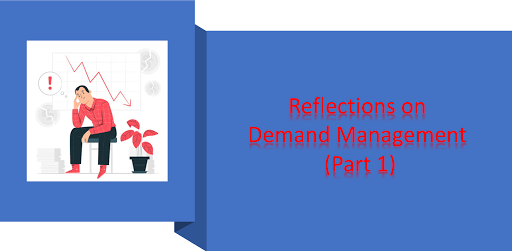When You Have to Make a Strategic Decision Without Much Data

It’s hard to set a strategic direction in the midst of uncertainty. One persistent problem is that the data to justify a course of action only becomes clear when it’s too late to act. This problem — or information-action paradox — demands a paradoxical solution. In this case, leaders need to act when the data tells them not to.
That’s not to say that leaders should ignore data. Rather, they should recognize the limits of the data they usually use to make strategic investments such as market size, growth rates, share, margins, and so on. The existing data describes what has already happened, not what might or will happen.
Strategy making shouldn’t be left to guesswork or pure hunches either. Instead, leaders should deliberately wander to find fresh insight that can help them make sense and set a course through uncertainty. This article describes three specific ways to do just that.
1. Seek early warning signs of change.
One of the pillars of Satya Nadella’s change program at Microsoft has been shifting from focusing on lagging indicators, such as revenues, to leading indicators, such as net promoter score. Lagging indicators result from past decisions. Leading indicators point to future problems or opportunities.
Beyond having leading indicators on dashboards, executives should seek our early warning signs of change in two places.
The first place is with customers. Understand how current customers are considering emerging solutions. One thing to watch for is “near misses,” where customers considered, but ultimately rejected, choosing alternative suggestions. Such an analysis helped the Australian arm of global law firm King & Wood Mallesons see signs that customers were beginning to take new legal technology providers more seriously, spurring action to develop a capability around technology before the need showed up in traditional data.
Ideally, executives should spend time with a wide spectrum of customers: loyal mainstream customers, customers that have recently switched to other solutions, and customers in extreme circumstances. One beverage company trying to understand hydration carefully studied how militaries functioned in extreme heat. It helped the company come up with innovative solutions, which it could adapt for more mainstream uses, such as tablets to add to water to provide extra nutrients or new packaging that kept beverages cooler for longer periods of time.
Second, executives should have first-hand knowledge of the relevant startups in their sector. Most startup companies fail, of course, but paying careful attention can help to spot important changes early. Microsoft’s early investment in OpenAI gave it a window to changes in the artificial intelligence industry. Go deeper than the big name, publicly visible startups; seek ones that are still in stealth mode. Or visit a university lab and get a glimpse of next-generation technologies. This exploration strengthens the intuition to set a course through uncertainty.
2. Experience tomorrow today.
“The future is already here,” science fiction writer William Gibson once said. “It is just not evenly distributed.” Experiencing tomorrow today means getting hands-on experience with emerging technologies. In a class I teach at Dartmouth’s Tuck School of Business, I have students write a “report from the future.” It starts by playing around with emergent or evolving technologies such as autonomous vehicles, cryptocurrency, DNA diagnosis, e-sports, or additive manufacturing (3-D printing). Students then reflect on what surprised them the most, where they could imagine the technology being in 10 years, how it might affect existing organizations, and what startup opportunities they see. A persistent takeaway from the activity is that experiencing a technology provides much richer learning than reading about it.
One of the ways I experience tomorrow today is by spending time with my children. Each has taught me something about the future. When we lived in Singapore, my now 18-year-old son Charlie was part of the founding team of a cryptocurrency startup. That let me learn about decentralized finance and distributed ledger technologies. My 16-year-old daughter Holly, an active digital artist, has taught me how the maker movement is still in its early stages, with more media democratization on the horizon. My 12-year-old son Harry has been my guide to the metaverse through everything from playing Roblox and Minecraft to using his Oculus Rift. I can’t wait to see what my seven-year-old son Teddy will teach me!
If you have children, spend time with them. Don’t just ask them what they are doing. Do it alongside of them. There is no better way to learn about the future than spending time with young people.
3. Practice associative thinking.
About 15 years ago, MIT’s Hal Gregersen and Brigham Young University’s Jeff Dyer led a fascinating study to determine the characteristics of successful innovators. One of their key findings, summarized in the book The Innovator’s DNA (coauthored by Clayton Christensen), is that innovators excel at “associative thinking.” That is, they connect two seemingly disparate concepts to develop a novel idea. Hollywood thrives on associative thinking. In Made to Stick, Chip and Dan Heath describe how a “Hollywood Pitch” contains an anchor that is familiar and a twist that is novel. The 1994 movie Speed, for example, was pitched as “Die Hard, on a Bus.” Die Hard is a familiar, wildly popular movie. That’s good. On a bus. That’s different. Tell me more.
Associative thinking is a skill that can be consciously practiced. I start each of my classes with a few minutes to either have open-ended reflections or more guided associations. One activity is asking students to think of images that connect to the industry we are studying in class. Another entails asking students to think of movies, shows, or a song that connect to the industry. A third prompts students to simply close their eyes, let their mind wander, and see where it goes.
Students often start with associations that are quite literal. A case about a law firm leads to images of people wearing suits, or the TV series Suits. Sometimes, students can make more abstract associations. A case about a merger where an underlying issue is a lack of trust between the two organizations might prompt a reflection of the 2010 movie Inception, which questions the nature of truth.
It can be quite fun, but it is also very practical, as associations can allow executives to see possibilities that would otherwise be hidden. More broadly, deliberately wandering can be a salve for executives who feel stuck in the face of uncertainty.
Seeking weak signals, experiencing tomorrow today, and practicing associative thinking can allow executives to spot tomorrow’s disruptions today — and develop creative strategies to turn potential threats into opportunities.
Resource: GWFM Research & Study





